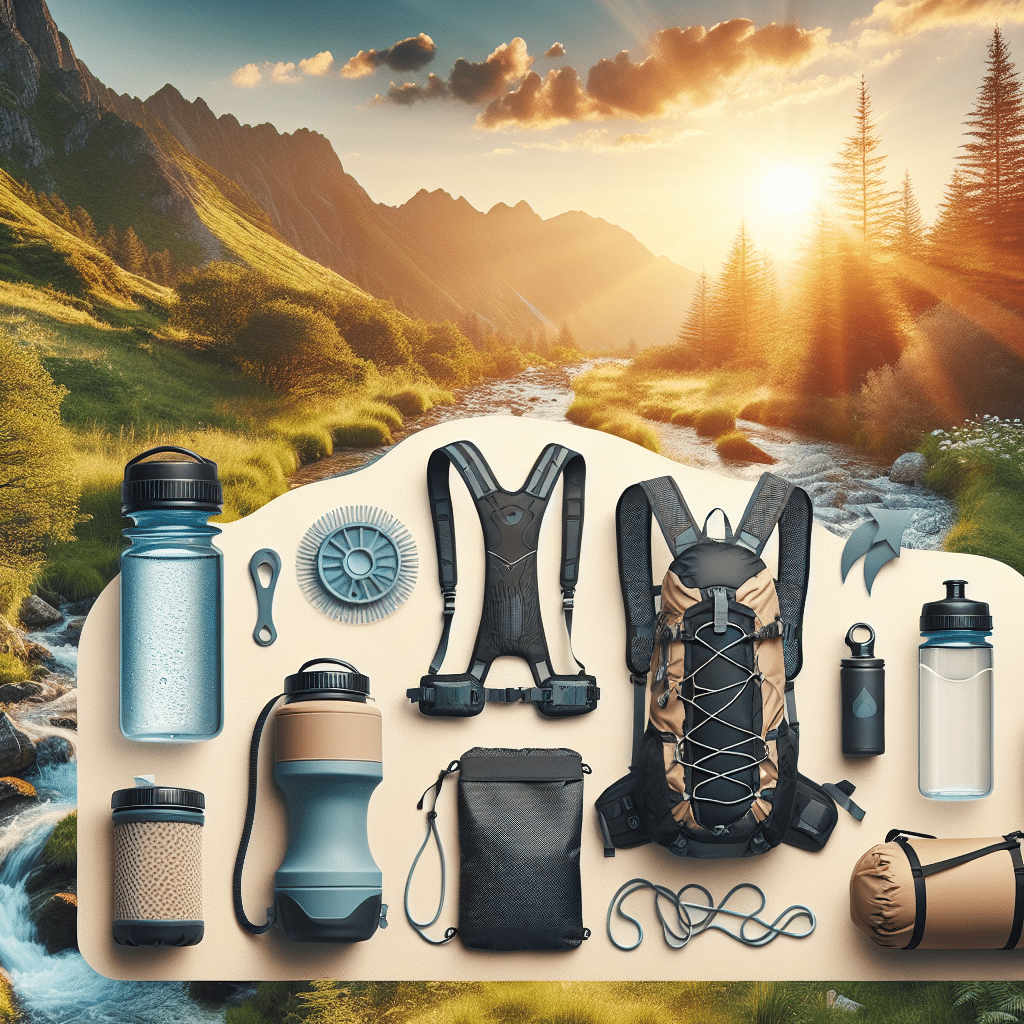Choosing Lightweight Water Gear for Multi-Day Hikes
Understanding Hydration Needs
When embarking on a multi-day hike, staying hydrated is critical. The human body can lose a significant amount of water daily, especially when exerting energy through physical activities such as hiking. The general recommendation is to consume about half a liter (17 ounces) of water per hour during moderate activity. Thus, packing the right water gear tailored to your needs is essential.
Types of Water Gear
-
Water Storage Solutions
- Hydration Reservoirs: These are flexible bladders that fit in a backpack and come equipped with a hose, allowing for hands-free hydration. Popular choices include the CamelBak Crux and Osprey Hydraulics, both known for their lightweight designs and high-capacity storage (2-3 liters).
- Water Bottles: The classic choice for many hikers, lightweight bottles made from plastic or aluminum are easy to pack and clean. Look for brands like Nalgene or Klean Kanteen with a volume of 1 liter for optimal balance between size and weight.
- Collapsible Water Bags: These highly portable options allow you to carry water in a very lightweight and packable form. Brands like Sea to Summit offer 4L reservoir bags, which fold up when empty, saving space in your pack.
-
Water Filtration Systems
- Portable Water Filters: For those who will be sourcing their water from streams or lakes, a good water filter is essential. Lightweight models such as the Sawyer Squeeze and Katadyn BeFree are designed to filter impurities while being easy to carry. Each can filter up to 100,000 gallons, making them ideal for multi-day treks.
- Water Purification Tablets: These tablets are effective for emergency situations and can easily fit into your first-aid kit. Brands like Aquamira offer chlorine dioxide tablets that require a wait time but are lightweight and straightforward to use.
-
Ultralight Cookware for Water Heating
- If you prefer warm meals or hot beverages, carrying a compact cooking solution is necessary. Options such as the MSR PocketRocket or Jetboil Flash are both lightweight (under a pound) and highly efficient for boiling water, making trail meals enjoyable.
Weight Considerations
When selecting your hydration gear for hikes, weight is a major factor. Aim for total water gear weight under 2-3 lbs for a multi-day trip without sacrificing functionality.
- Weigh it out: For instance, a full hydration reservoir (3 liters) weighs around 6.6 lbs; choose a smaller reservoir if you anticipate refilling from a nearby stream.
- Efficiency of use: Prioritize items that serve multiple purposes. For instance, a collapsible water bag can double as a makeshift shower at camp.
Usage Tips for Lightweight Water Gear
-
Plan Your Hydration Strategy: Before your hike, scout potential water sources along the trail using apps like AllTrails or Guthook. Ensuring you know where to refill will alleviate the need to carry excess water.
-
Filter Maintenance: Carry a clean cloth to wipe your water filter’s end before use; this can significantly increase its efficiency and lifespan.
-
Storing Water: If using storage reservoirs, ensure they are filled to max capacity when you have access to clean water. For bottles, use wide-mouth bottles for easier filling, especially if you’re drawing from natural sources.
Hydration Bladders vs. Water Bottles
Advantages of Hydration Bladders:
- Hands-free hydration
- Consistent accessibility
- Option for built-in insulation, keeping your water cool (a feature of some brands).
Advantages of Water Bottles:
- Easier to clean
- More durable for extreme conditions
- Easier to refill, especially in rocky terrains.
Each has unique advantages. Test both types prior to your hike to determine your personal preference.
Advanced Technologies in Water Gear
Innovative features are becoming standard in water gear. Look for:
- Antimicrobial Treatments: Added to hydration systems to prevent algae and bacteria buildup.
- Reflective Insulation: Keeps your water at a cooler temperature longer.
- In-Built Water Quality Testing: Newer filtration systems provide immediate results regarding water purity levels.
Budgeting for Investment
Investing in good-quality lightweight water gear will save you hassle in the long run. Here’s a simplified breakdown of potential costs:
- Hydration Reservoir: $30 – $60
- Water Filter: $25 – $100
- Cookware: $50 – $150
Though the initial expenditure can be significant, quality gear can last for years and is crucial for your hiking experience health and safety.
Conclusion (Omitted)
By focusing on lightweight water gear that meets your needs, you ensure hydration during multi-day hikes remains efficient and effortless. Selecting multiple-use items, regularly maintaining your gear, and understanding hydration strategies can lead to a successful adventure. Each of these components works together to provide a smoother, safer hiking experience, helping you enjoy the journey as much as the destination.
